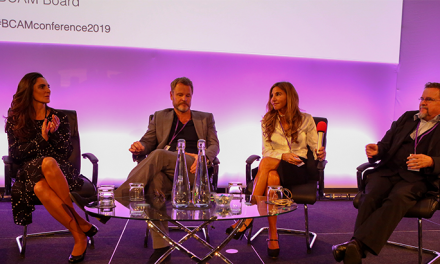Dr Frédéric Flament, Global Head of instrumental Science, L’Oréal, will be giving a keynote presentation on Skin Ageing at the upcoming 3rd International Skin Care Conference in Bangkok, Thailand.
During a lifetime, skin changes in appearance and structure not only because of chronological progressions but also due to environment and lifestyles, i.e. sun and UV exposure, pollution, urban stress or diet. The demonstration of treatment efficacy on all dimensions of ageing is essential for measurement close to real life. For Caucasian and Asian populations, objective evaluation tools and related knowledge is a pathway to assess prevention and correction/reversibility. The different issues of the Skin Aging Atlas present these achievements.
Different studies were carried out in France (Paris, Montpellier) on a total of 600 women and in China (Shanghai, Guangzhou) on a total of 800 women aged from 20 to 80 years. In all studies, volunteers were photographed under standard conditions to be characterized by trained experts on standardized clinical scales covering four clinical clusters (wrinkles/skin texture; ptosis/sagging; pigmentation disorders and vascular disorders). In addition, pictures were evaluated by a panel of naive consumers from the same ethnic origin to conclude about holistic perception.
There were three kinds of studies: i) some were performed in areas with high UV radiance with two cohorts defined based on sun exposure behavior, ii) some were performed in two cities with the same UV radiance but very different urban pollution levels and Air Quality Index and iii) some were performed during a day to follow signs of tiredness due to urban daily stress.
A global characterization of exposome impact on skin from photo-types I to IV have been established:
- i) For solar, exposomes different evolution by comparing sub-cohorts, differences have been noticed for all wrinkles/skin texture signs from 50 years old for Caucasian women and 20 years old for Asian panelists. All pigmentary disorders were found significantly higher with high solar exposure for both ethnics, whatever the age. Concerning ptosis/sagging signs major differences could be observed with the absence of UV impact for Caucasian panelists and significant UV role whatever age for Asian women. Women of all ages of “non-sun-phobic” groups were perceived older than their chronological age.
- ii) For pollution, increased severity of almost all facial signs was observed. In particular, the clinical severities of 8 facial signs (5/skin texture and 3/pigmentation-related) were found strongly and significantly enhanced by a regular exposure to a severe chronic urban pollution. The naïve panel judged the facial appearance of women under urban pollution as less radiant, more dull, less healthy and found them older than their counterparts.
iii) All volunteers felt a little more tired by evening. Both groups were judged by naive consumers as slightly less “young” and “more tired” by evening. Four facial signs, among all the features scored, showed subtle but significant changes, according to age class.
With the Skin Aging Atlas collection we open a new field of characterization and measurement for the impact of exposure on facial signs not only for solar or urban pollution impacts but also stress and tiredness induced by daily urban life where clinical modifications have been measured and therefore the impact of the cosmetic regimen in their correction and prevention potentialities.
Born in 1976, Frederic Flament began his career in the beauty and cosmetics industry in 1999 with 1.5 years in the Advanced research Department of L’Oréal as an engineer in the image and signal processing field to develop new methods merging confocal microscopy and new spectroscopy measurements to assess skin and hairs structures and biochemistry. After this experience he achieved a PhD degree between Pierre Fabre company and Ecole Centrale in sensory and instrumental sciences by understanding tactile perception through friction/acoustic measurement of hairs and skin in vivo.
He joined the L’Oréal Research & Innovation teams in the performance evaluation department in 2004 to build a solid expertise in instrumental and clinical sciences and link with consumer’s perception to support in creative and sincere ways the major launchings of the L’Oréal Group in Skin Care axis with new claims.
As an international leader for Cosmetic Métiers in technical evaluation, he orchestrated the development of key tools and related knowledge for the L’Oréal group as a collection of Skin Aging Atlas books (5 volumes already issued) with more than 25 scientific papers using them to qualify and quantify the impact of products, environment, lifestyles or aging. Understanding our consumer and the ability to measure in real life or real time was essential in these developments to evaluate cosmetic products in a more accurate way, i.e. invent the future of diagnostic and communication.
Today Frederic Flament as the Global Head of instrumental Science, leads the development of global and integrated evaluation platforms among all Research & Innovation hubs to merge technical assessments and consumers perception for Skin, Scalp & Hairs, to transform and with new technologies (AI, AR, sensors, patches…) anticipate the needs of consumers and all L’Oréal brands in a digital moving world.






